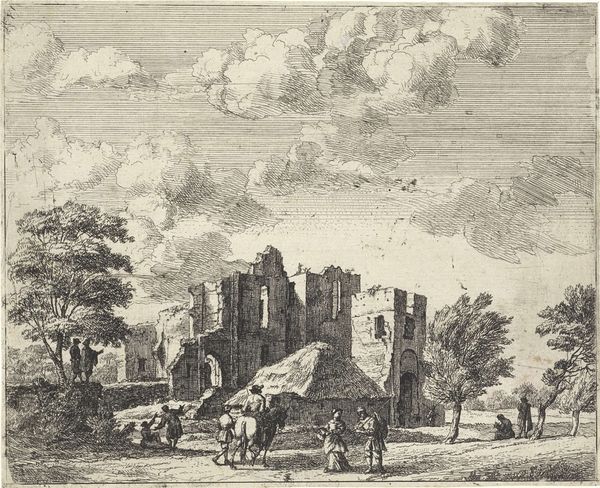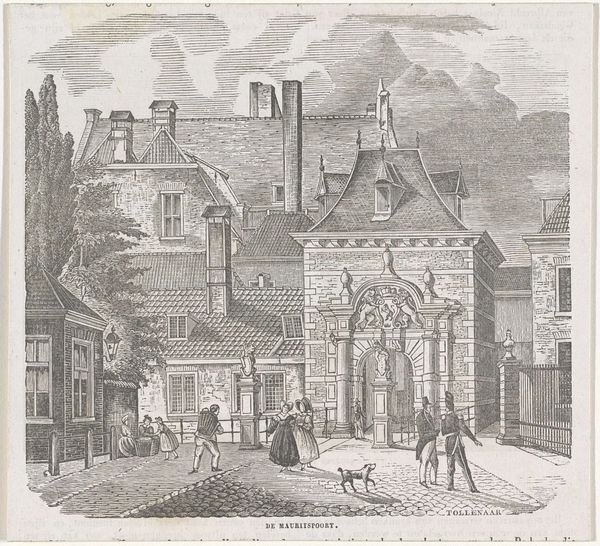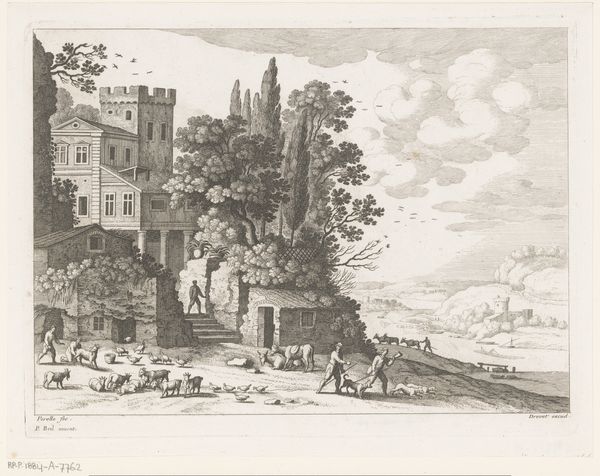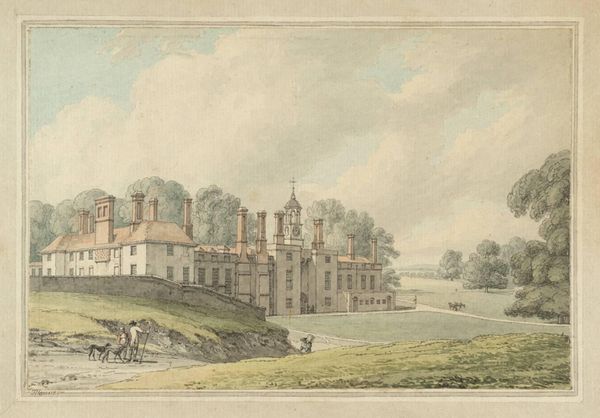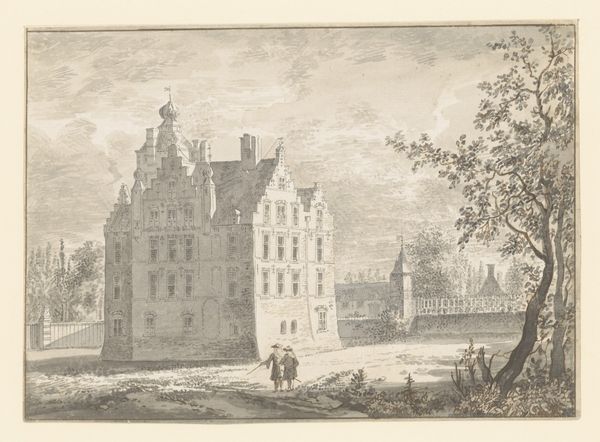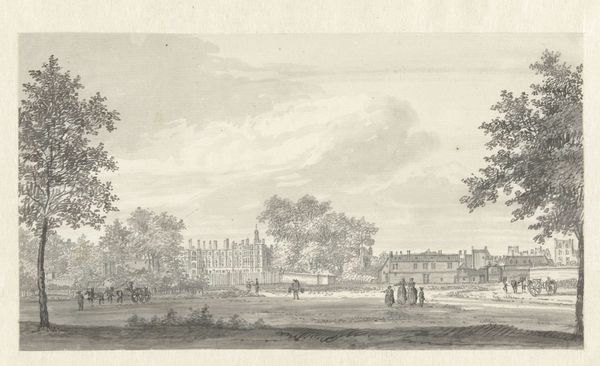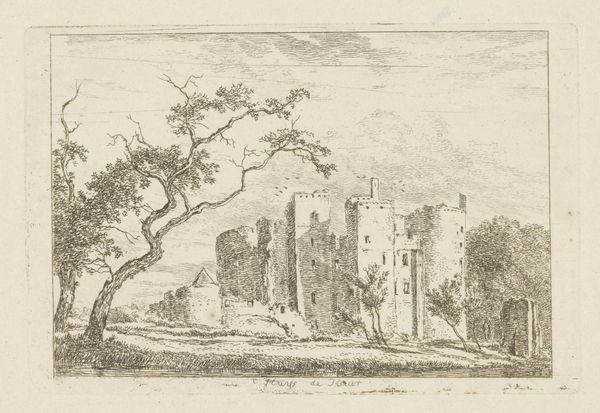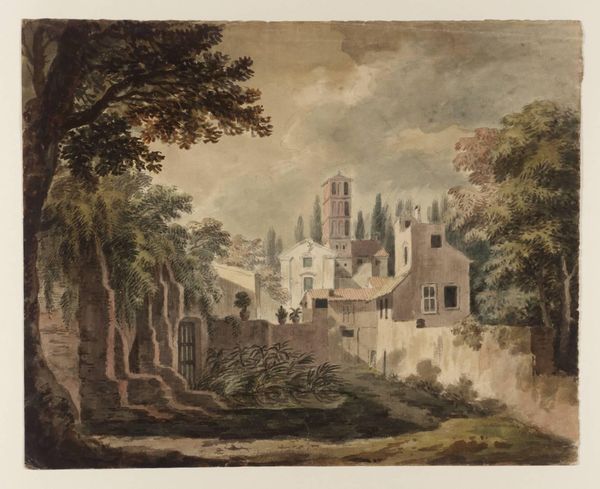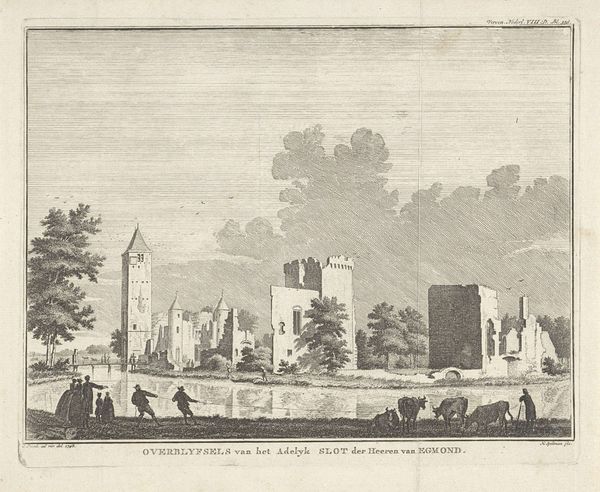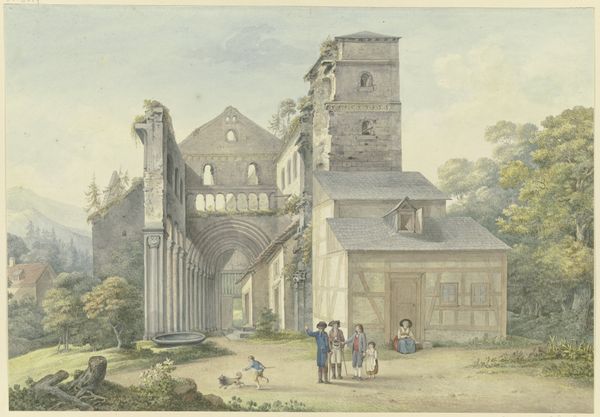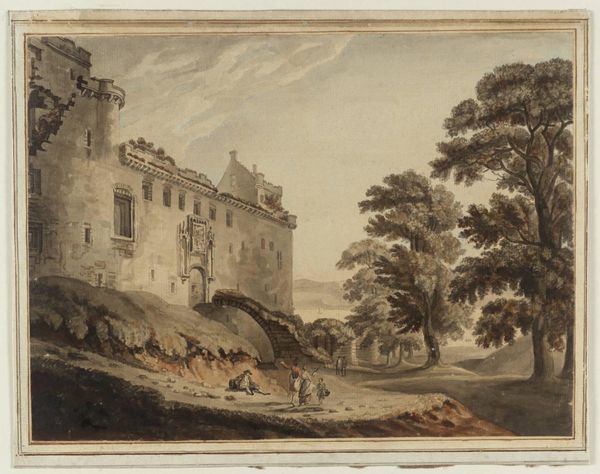
Dimensions: support: 324 x 508 mm
Copyright: CC-BY-NC-ND 4.0 DEED, Photo: Tate
Curator: Paul Sandby, active in the late 18th century, brings us this watercolor entitled "The Cemetery Gate of St Augustine’s Monastery Canterbury." It’s a bustling scene. Editor: It feels…domesticated. Even with the architectural grandeur, the muted palette and active figures make it intimate. Curator: Sandby’s choice of watercolor is critical; it was becoming increasingly popular, particularly among amateur women artists. His view emphasizes the societal dynamics of the period. Editor: I notice the materials have a kind of softness, not just in the colour palette but also in the lines. It's far from the hard lines of an etching, for example. I wonder if that's related to its market. Curator: The very act of depicting this scene places it within a narrative of power, class, and gender. Who has the leisure to stroll, to observe, to create? Editor: And what kind of labor goes into making that scene readable and sellable for a certain price? This invites me to think of the entire production and circulation of the image. Curator: It's a fascinating lens through which to view the complexities of Georgian society. Editor: Indeed, it gives us a glimpse into both the materiality and the social fabric of that time.
Comments
tate 7 months ago
⋮
http://www.tate.org.uk/art/artworks/sandby-the-cemetery-gate-of-st-augustines-monastery-canterbury-n01856
Join the conversation
Join millions of artists and users on Artera today and experience the ultimate creative platform.
tate 7 months ago
⋮
Sandby has treated the medieval gateway with the care associated with topographical draughtsmanship (the accurate recording of particular places) but here it forms the backdrop for a humorous and incident-filled scene of daily life. Topographical draughtsmanship was an important skill in the military, used in the surveying of land and fortifications. Sandby was trained as a military draughtsman, but he developed original approaches. By the 1790s Sandby was thought of as the crucial figure in British landscape art, who had forged a specifically ‘national’ style of watercolour. Gallery label, September 2004
